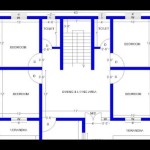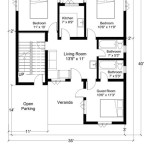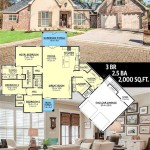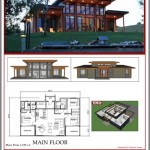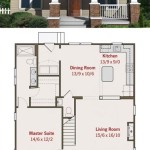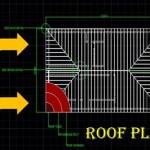Gothic Revival Cottage House Plans: A Comprehensive Guide
Gothic Revival cottage house plans represent a distinctive architectural style that blends the charm and intimacy of a traditional cottage with the ornate detailing and historical influences of Gothic architecture. This style, popularized during the mid-19th century, offers a unique aesthetic appeal that continues to resonate with homeowners seeking character and historical authenticity in their dwellings. Understanding the key elements, historical context, and contemporary adaptations of Gothic Revival cottage house plans is crucial for anyone considering building or renovating a home in this style.
The Gothic Revival movement, which emerged in the late 18th and early 19th centuries, was a reaction against the prevailing Neoclassical style, which emphasized symmetry and classical proportions. Advocates of the Gothic Revival sought inspiration from the medieval period, particularly the architecture of Gothic cathedrals and castles. This influence translated into residential architecture with features such as pointed arches, steeply pitched roofs, decorative gables, and elaborate ornamentation. The cottage version of this style further tempered the grandeur, making it more adaptable for smaller, more intimate living spaces.
Gothic Revival cottage house plans are not mere replicas of historical designs. Instead, they often incorporate modern building techniques and materials while maintaining the core aesthetic principles of the style. This blend of old and new allows for the creation of homes that are both visually striking and functionally efficient.
Key Characteristics of Gothic Revival Cottage House Plans
Several defining characteristics distinguish Gothic Revival cottage house plans from other architectural styles. Recognizing these features is essential for identifying and appreciating the unique qualities of this design.
Steeply Pitched Roofs: One of the most noticeable features of a Gothic Revival cottage is its steeply pitched roof. This element serves both an aesthetic and practical purpose. The steep slope allows for efficient water runoff, particularly in regions with heavy rainfall or snowfall. Aesthetically, the high-pitched roof contributes to the overall verticality and drama of the design. Often, the roof is adorned with dormers, adding to the visual interest and providing additional light and ventilation to the attic spaces. The gables, the triangular upper part of a wall under the roof, are frequently decorated with bargeboards, also known as vergeboards.
Pointed Arches and Windows: Pointed arches are a quintessential Gothic element, and they appear in various forms in Gothic Revival cottage house plans. They are most commonly found in windows and doors, but can also be incorporated into interior archways and decorative elements. The pointed arch creates a sense of height and elegance, distinguishing the style from the rounded arches characteristic of Romanesque architecture. Windows are often tall and narrow, further emphasizing the verticality of the design. Stained glass, although not always present, can add a touch of authentic Gothic flair.
Decorative Ornamentation: Gothic Revival architecture is known for its elaborate ornamentation, and cottage versions of the style are no exception. Although cottage designs tend to scale down the ornamentation seen in grander Gothic structures, they still feature distinctive decorative elements. Bargeboards, mentioned earlier, are a prime example. These ornate, projecting boards are attached to the edges of the gables and are often intricately carved or pierced with trefoil or quatrefoil motifs. Other common decorative elements include finials, which are ornamental features placed at the apex of gables or roofs, and quatrefoil or trefoil window designs. The detailing, even in smaller homes, reflects the overall commitment to Gothic principles and adds to the visual richness of the design.
Asymmetrical Facades: Unlike the symmetrical facades of Neoclassical architecture, Gothic Revival cottages often feature asymmetrical layouts. This asymmetry adds to the picturesque quality of the design, creating a sense of informality and charm. The placement of windows, doors, and other architectural elements is often deliberately unbalanced, contributing to the overall visual interest. This is not to say the appearance is haphazard, but the deliberate avoidance of bilateral symmetry is a defining part of the Gothic Revival aesthetic.
Use of Natural Materials: Gothic Revival cottages often incorporate natural materials such as stone, brick, and wood. The use of these materials helps to blend the structure with its natural surroundings and contributes to the overall sense of authenticity. Stone is frequently used for foundations or accent features, while brick can be used for exterior walls. Wood is used extensively for framing, siding, and decorative elements. The natural textures and colours of these materials add to the visual warmth and character of the design.
Adapting Gothic Revival Cottage House Plans for Modern Living
While historically accurate Gothic Revival cottages are charming, modern homeowners often seek accommodations for contemporary lifestyles. Adapting these plans requires careful consideration of how to integrate modern amenities and conveniences without sacrificing the architectural integrity of the style.
Open Floor Plans: Traditional Gothic Revival cottages often featured compartmentalized layouts with small, separate rooms. Modern homeowners, however, often prefer open floor plans that facilitate social interaction and create a greater sense of space. Integrating open floor plans into a Gothic Revival cottage requires thoughtful design. The key is to maintain the character of the style in other areas, such as the exterior facade and decorative elements, to balance the modern interior layout. Arches and decorative wooden beams can subtly divide spaces while maintaining a sense of openness.
Energy Efficiency: Historical Gothic Revival cottages were not designed with modern energy efficiency standards in mind. Adapting these plans for modern living requires incorporating energy-efficient features such as insulation, high-performance windows, and efficient heating and cooling systems. These features can significantly reduce energy consumption and improve the overall comfort of the home. Attention to detail is crucial in selecting materials and technologies that complement the aesthetic of the Gothic Revival style. For example, energy-efficient windows can be designed with Gothic-inspired tracery to maintain the historical appearance.
Modern Kitchens and Bathrooms: Modern kitchens and bathrooms often require more space and specialized features than their historical counterparts. Integrating these spaces into a Gothic Revival cottage requires careful planning. The key is to balance the functionality of modern amenities with the aesthetic of the style. For example, incorporating cabinetry with Gothic-inspired details and using natural stone countertops can help to blend the modern kitchen with the historical character of the home. Similarly, clawfoot tubs and period-inspired fixtures can enhance the authenticity of a Gothic Revival bathroom.
Accessibility Considerations: Adapting Gothic Revival cottage house plans for modern living may also involve incorporating accessibility features such as ramps, wider doorways, and accessible bathrooms. These features can make the home more accessible for individuals with disabilities or mobility limitations. Integrating accessibility features into a Gothic Revival cottage requires careful consideration of the design aesthetics. Ramps, for example, can be designed to blend seamlessly with the landscape, while wider doorways can be framed with Gothic-inspired arches.
Finding and Utilizing Gothic Revival Cottage House Plans
Finding the right Gothic Revival cottage house plan is a crucial first step for anyone interested in building or renovating a home in this style. There are several resources available for finding and utilizing these plans, ranging from historical archives to modern online databases.
Historical Archives and Collections: Many historical archives and collections contain original Gothic Revival cottage house plans. These plans can provide valuable insights into the design principles and construction techniques of the period. However, it is important to note that historical plans may need to be updated to meet modern building codes and standards. Furthermore, they may not reflect the needs of modern homeowners in terms of layout and amenities. Nevertheless, these archives can serve as inspiration and a starting point for creating a historically informed design.
Online Databases and Plan Providers: Numerous online databases and plan providers offer a wide selection of Gothic Revival cottage house plans. These plans are often designed by architects and designers who specialize in historical styles. Online resources often offer a range of options, from historically accurate replicas to modern adaptations. When searching for a plan, it is important to consider the size, layout, and features of the home, as well as the overall aesthetic. Reviews and testimonials from other homeowners can also provide valuable insights into the quality and usability of the plans.
Custom Design: For homeowners who are unable to find a suitable plan in existing databases, custom design may be the best option. Working with an architect or designer who specializes in Gothic Revival architecture can ensure that the design meets the specific needs and preferences of the homeowner while adhering to the principles of the style. A custom design allows for complete control over the layout, features, and materials used in the home. This option requires a greater investment of time and resources, but it can ultimately result in a home that is perfectly tailored to the homeowner's needs. The architect will also ensure the final design meets all local building codes and regulations.
Modifying Existing Plans: Another option is to modify an existing plan to better suit the needs of the homeowner. Many plan providers offer modification services, allowing homeowners to customize the layout, features, and materials of a pre-designed plan. This can be a cost-effective alternative to custom design, while still allowing for a degree of personalization. However, it is important to ensure that the modifications are compatible with the overall aesthetic of the Gothic Revival style and that they do not compromise the structural integrity of the home.
When selecting a Gothic Revival cottage house plan, homeowners should consider their budget, lifestyle, and aesthetic preferences. It is also important to consult with local building officials and contractors to ensure that the plan meets all applicable codes and regulations. With careful planning and attention to detail, it is possible to create a beautiful and functional Gothic Revival cottage that will be enjoyed for generations to come.

Gothic Revival Style Christine Huckins Franck Architect Llc House Vintage Plans Architecture

Charming Gothic Revival Cottage 1204 Sq Ft Architectural Designs 43002pf House Plans

Gothic Revival House Plans Google Search Victorian Vintage Floor

Gothic Revival An Alternative Trend For Victorian Americans House Plans Historic Preservation Architecture

Gothic Revival House Plans Floor For Builders

Victorian Style House Plan 2 Beds Baths 1204 Sq Ft 1016 79 Cottage Plans Floor Gothic Revival

Plan 43044pf Gothic Revival Gem Cottage House Plans

The History And Of Carpenter Gothic Style

The Sims Resource Charming Gothic Cottage

Charming Gothic Revival Cottage Your Historic House
Related Posts

